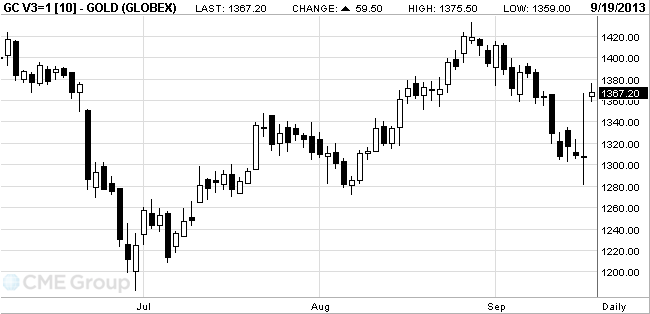- Gold rose after the Fed's decision
Notícias do Mercado
Gold rose after the Fed's decision
Gold prices rose after the U.S. Federal Reserve decided to leave unchanged its program to buy bonds . A promise to continue to pursue a policy of "cheap money " has increased the demand for the precious metal.
As in other markets , the market for precious metals investors were waiting for the partial collapse of the program to purchase bonds worth 85 billion dollars a month.
In the first years after the financial crisis, many investors invest their money in gold on concerns over the fact that alternative program the Fed to stimulate the economy , known as quantitative easing , will lead to higher inflation . Investors who put their initials on the rise , believed that gold better than other assets retain their value in an inflationary environment.
However , inflation has not reached alarming levels , while the Fed's balance sheet exceeded 3 trillion dollars. Despite the observed immediately after the announcement of the Fed's decision on Wednesday, rising gold prices , it remains one of the assets , showed the worst results this year.
Some analysts believe that the Fed's decision until the collapse of bond purchases once again shifted the market's attention to inflation risks . Even many experts had expected the central bank to reduce the amount of programs to stimulate the economy. Other brokers prefer not to put a special meaning in the Fed's decision , saying that gold prices are likely to continue to decline.
The cost of the October gold futures on COMEX today rose to $ 1375.50 per ounce.
